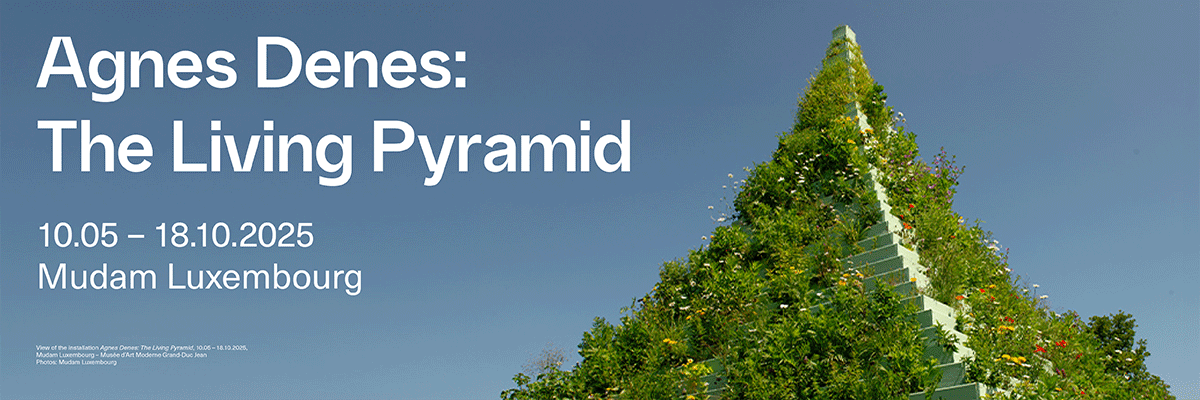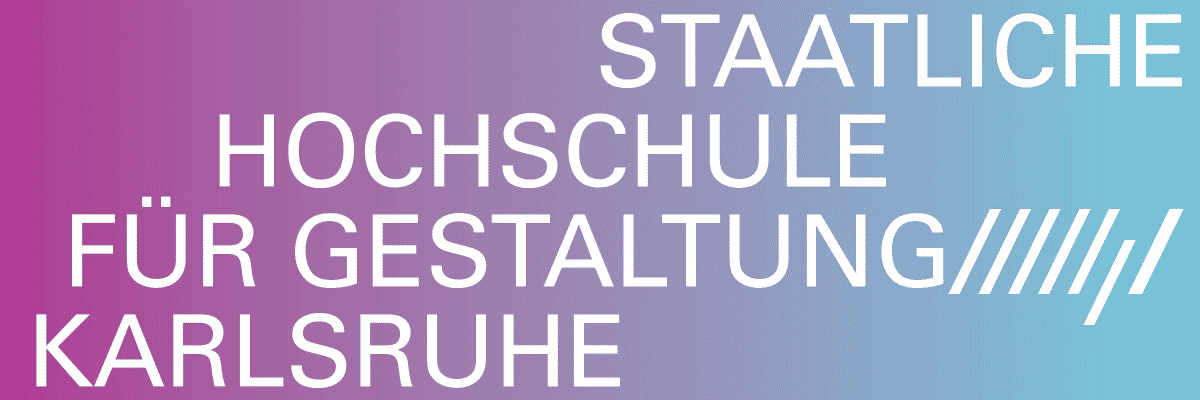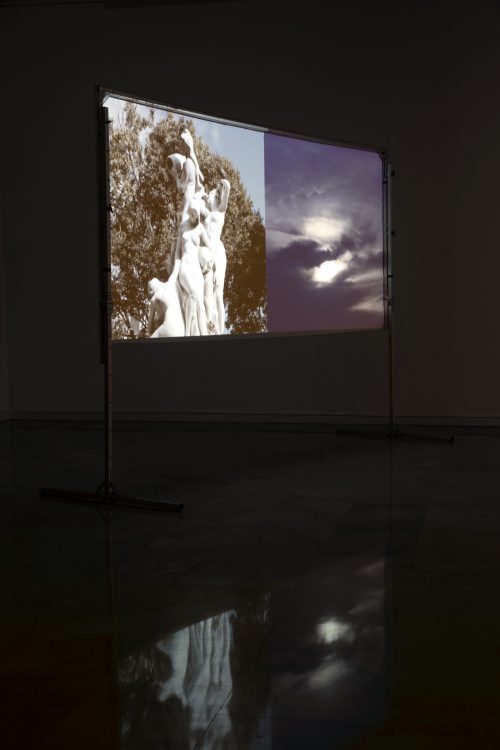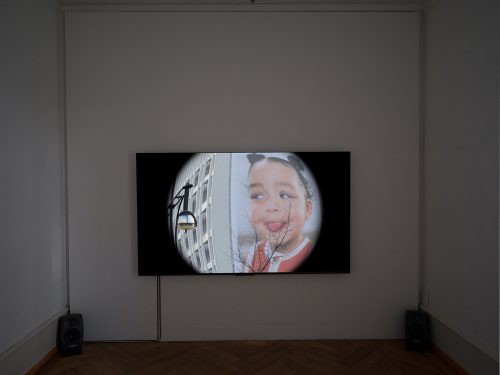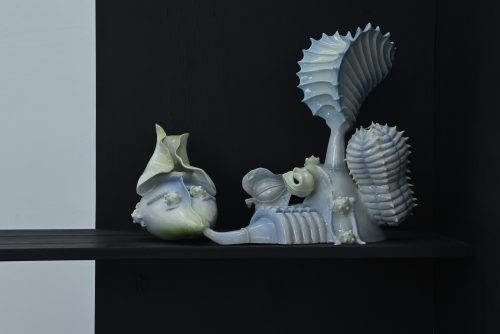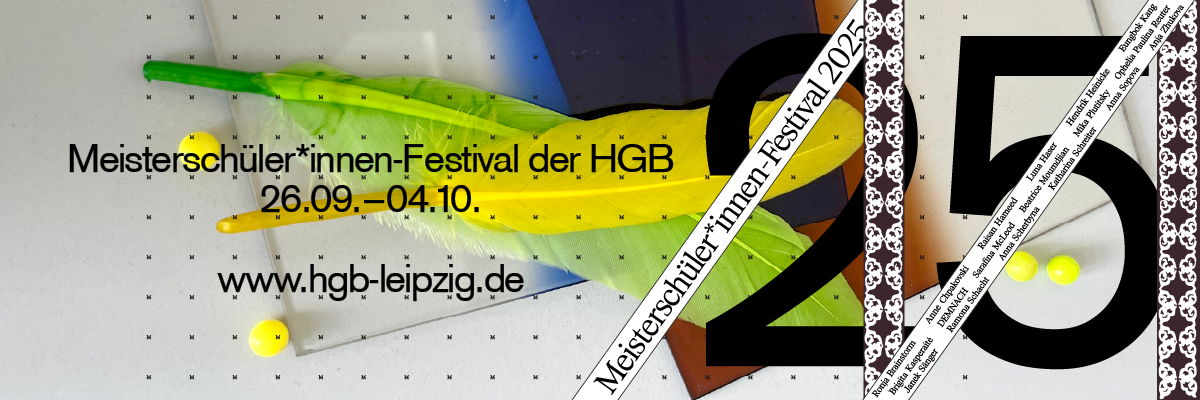
Anna Vogel
Fly In Fly Out
Project Info
- 💙 Sperling, Munich
- 🖤 Anna Vogel
- 💜 Ilaria Sponda
- 💛 Sebastian Kissel & Anna Vogel
Share on
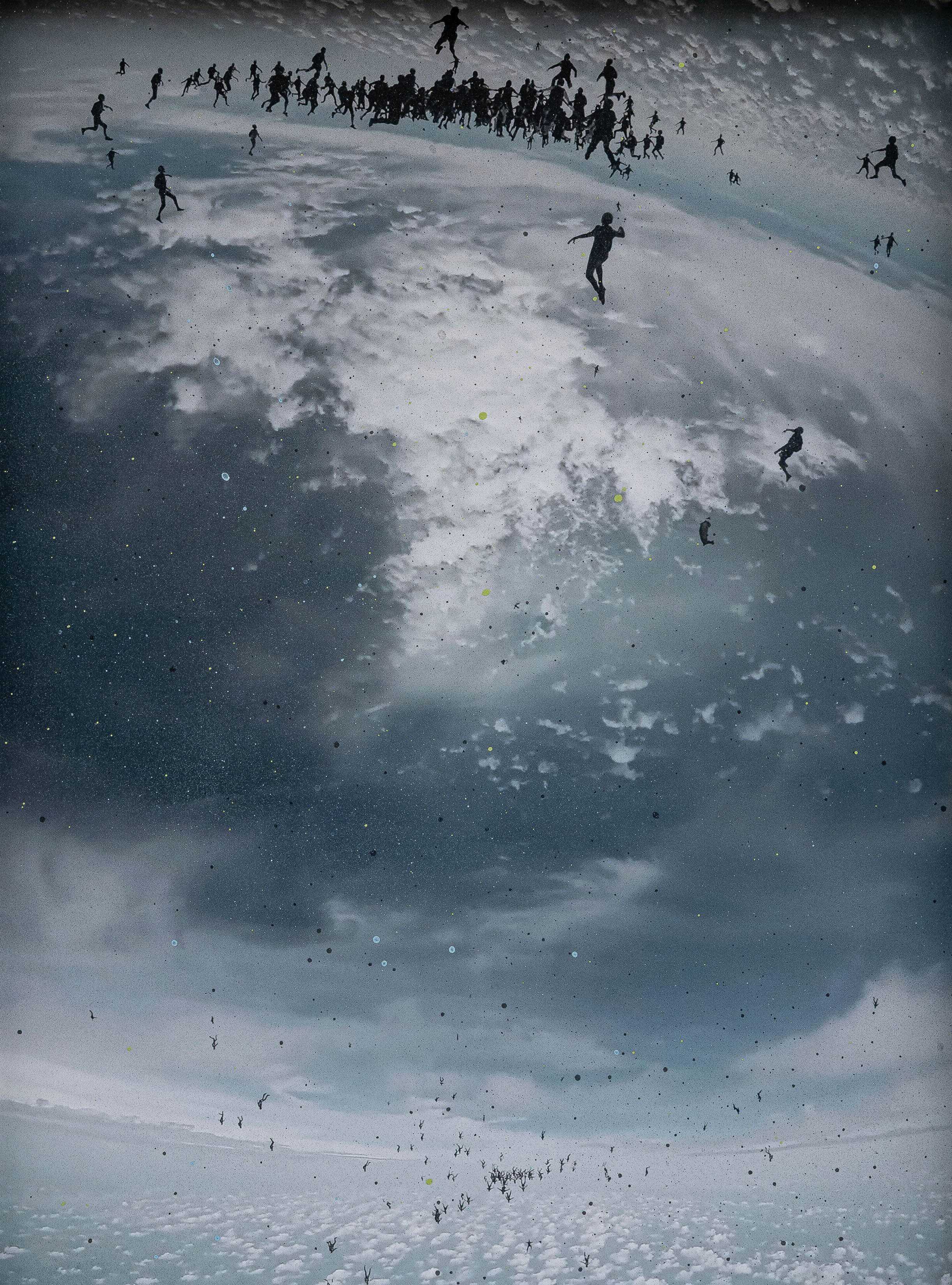
Anna Vogel, globe I, 2025, pigment print, varnish, frame finished in light gray, 40 × 30 cm (3 variations)
Advertisement
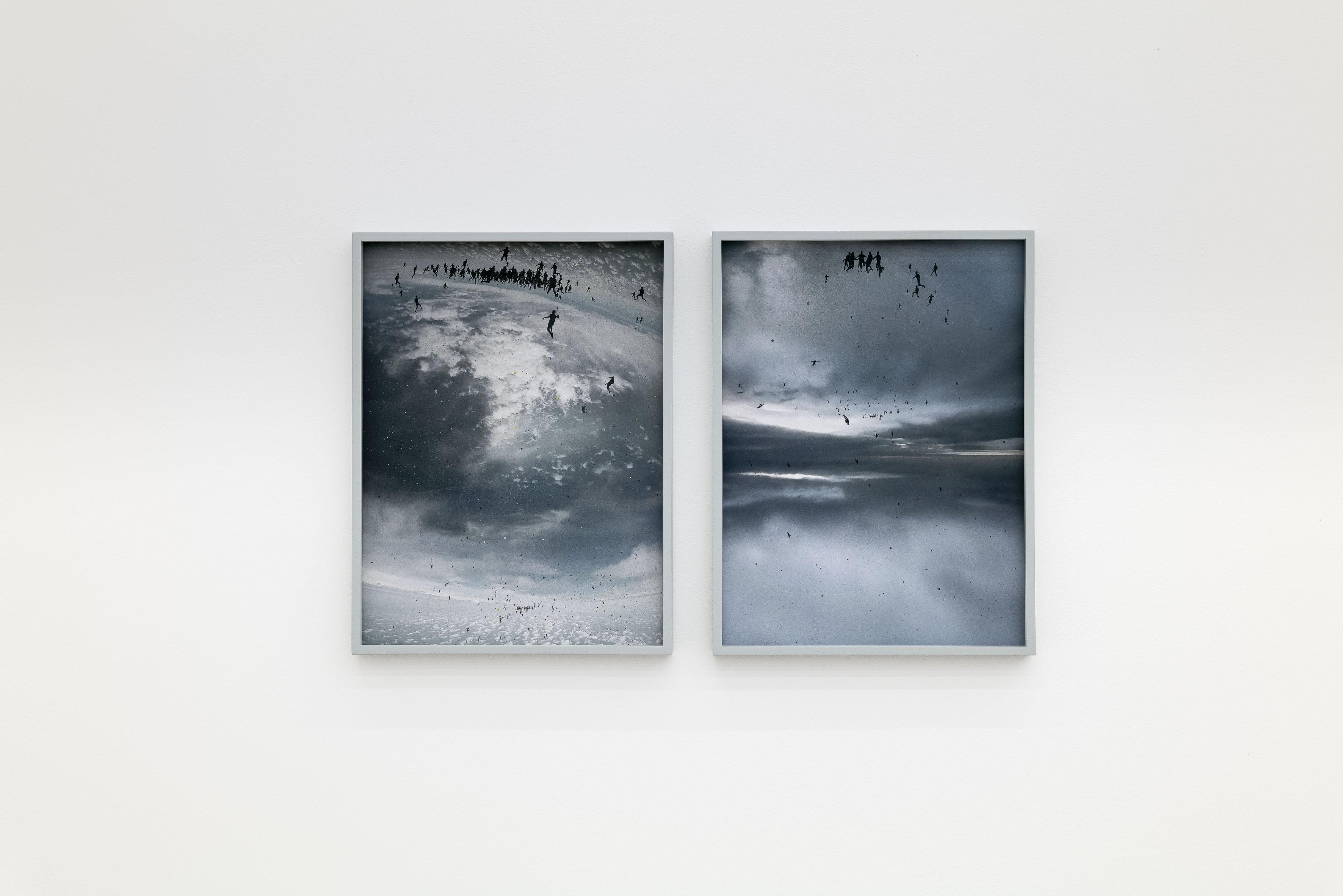
Anna Vogel, Fly In Fly Out, 2025, exhibition view at Sperling, Munich
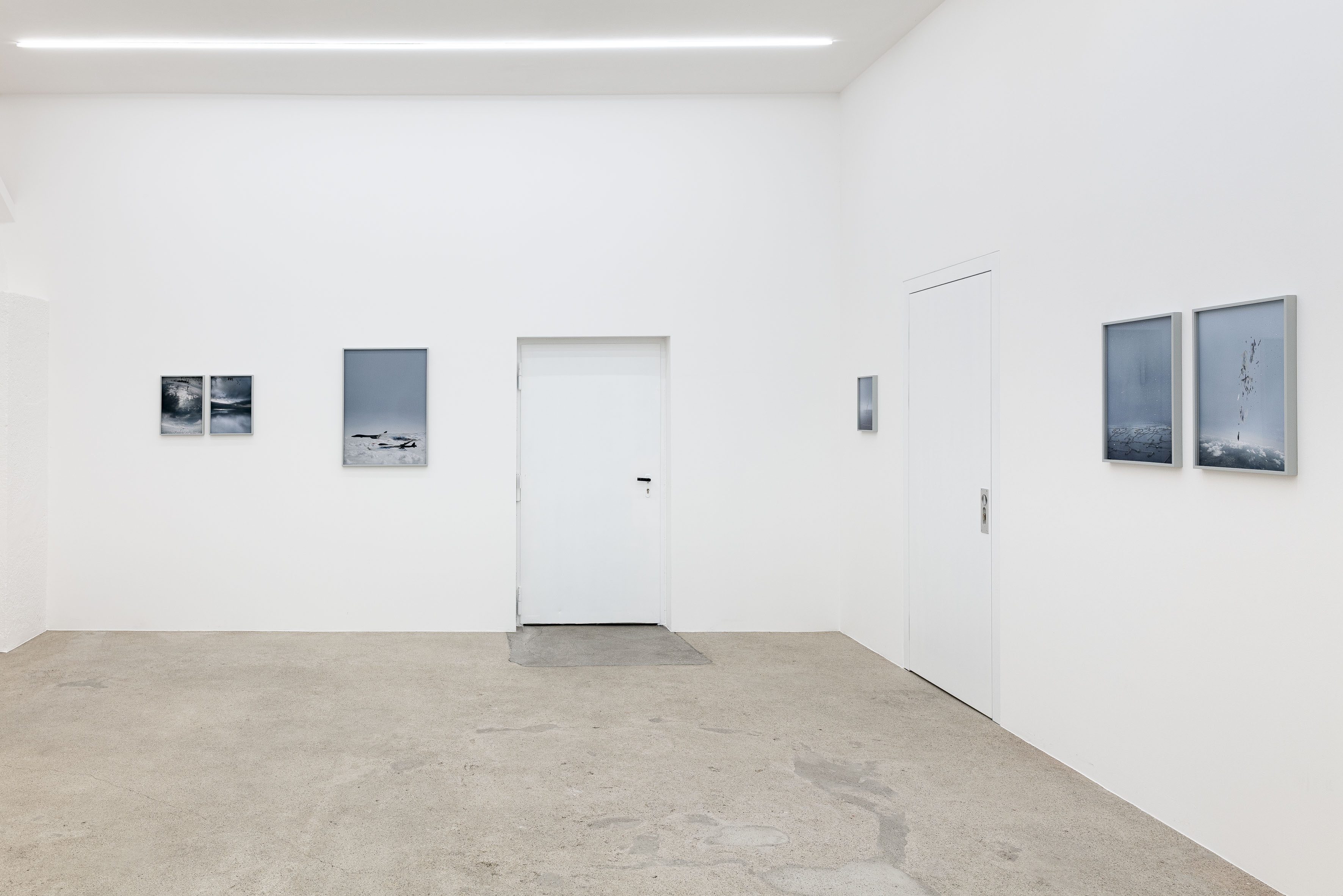
Anna Vogel, Fly In Fly Out, 2025, exhibition view at Sperling, Munich
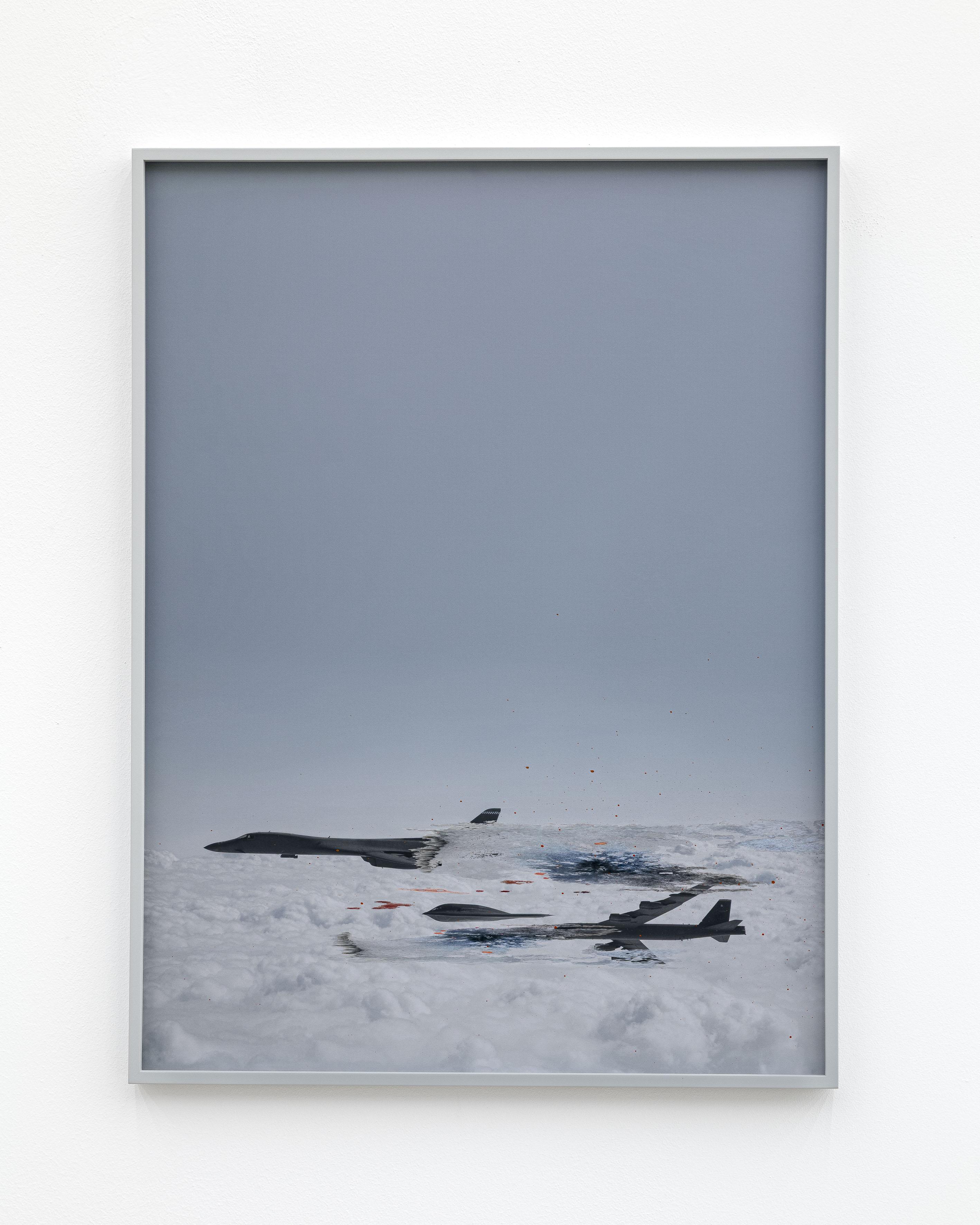
Anna Vogel, trio, 2025, pigment print, ink, varnish, frame finished in light gray, 80 × 60 cm (3 variations)
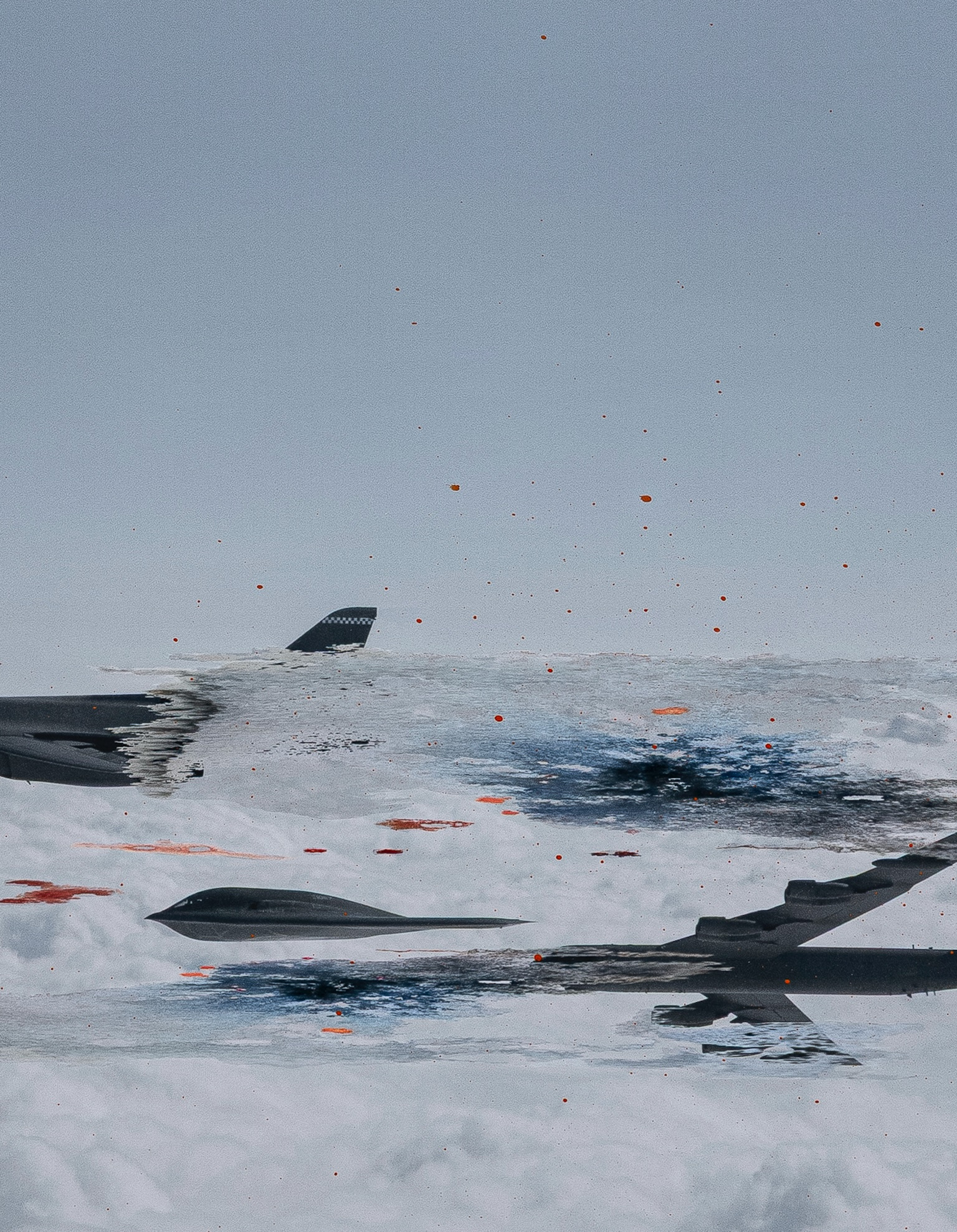
Anna Vogel, trio, 2025, pigment print, ink, varnish, frame finished in light gray, 80 × 60 cm (detail)
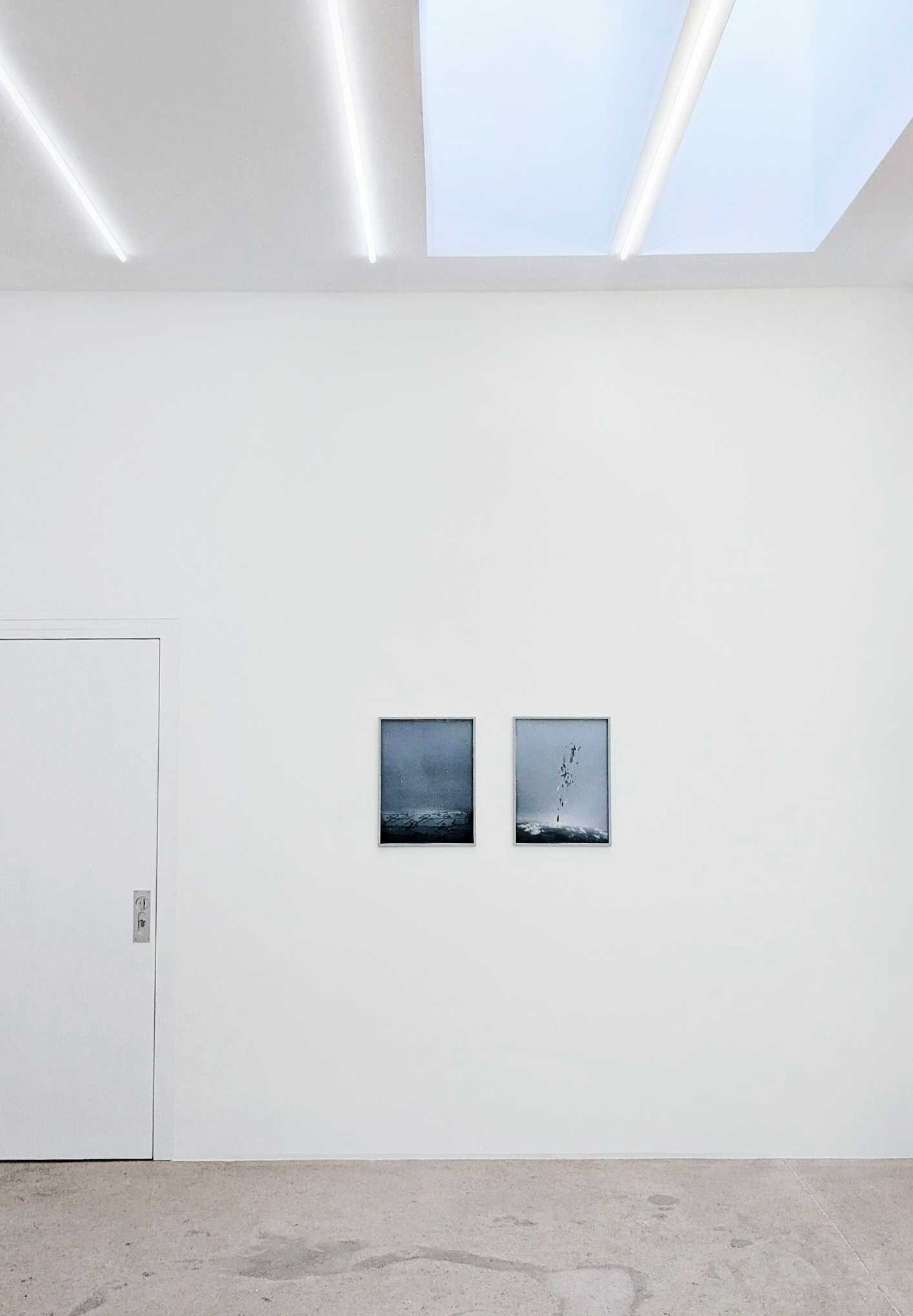
Anna Vogel, Fly In Fly Out, 2025, exhibition view at Sperling, Munich
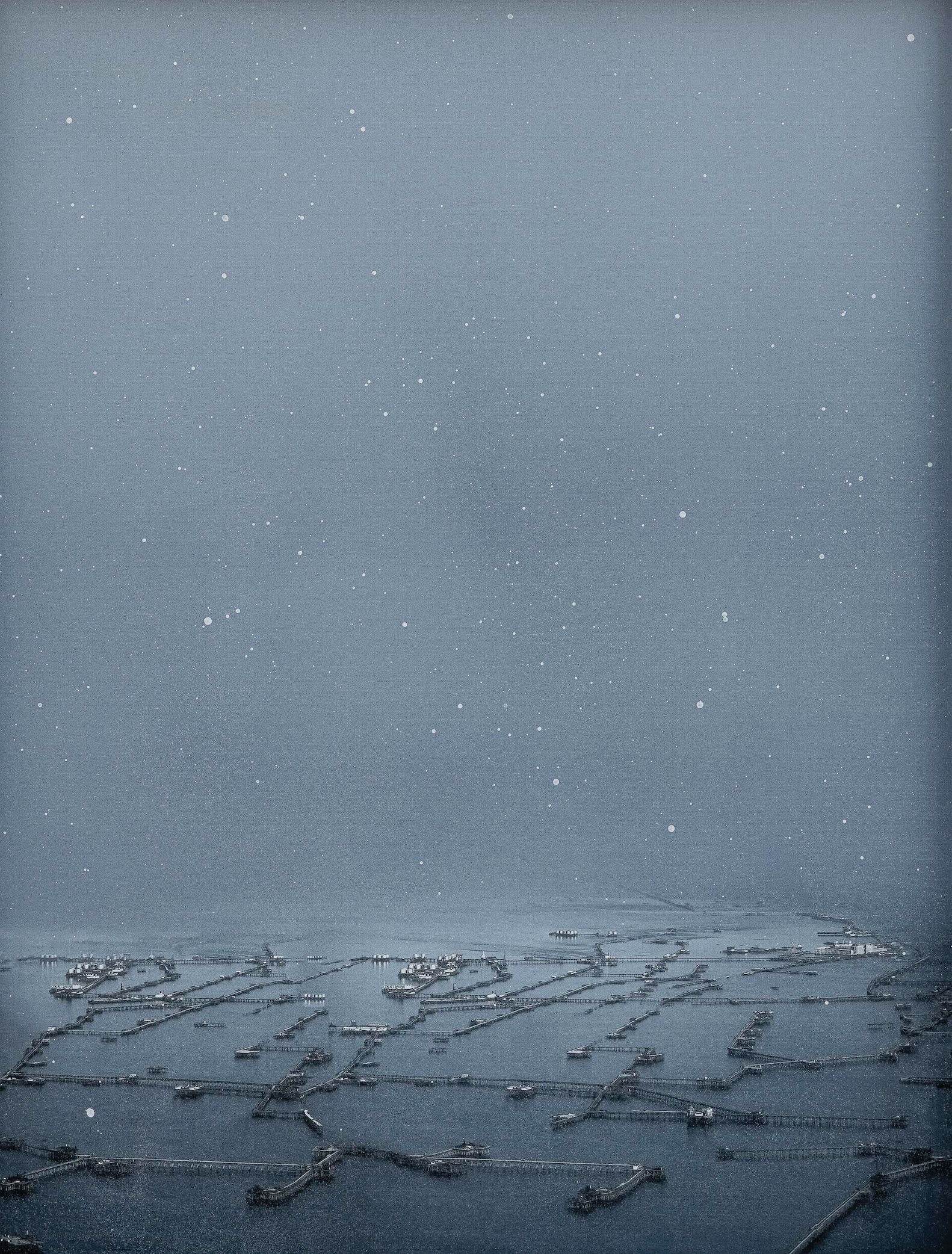
Anna Vogel, docks, 2025, pigment print, varnish, frame finished in light gray, 53 × 40 cm (detail)
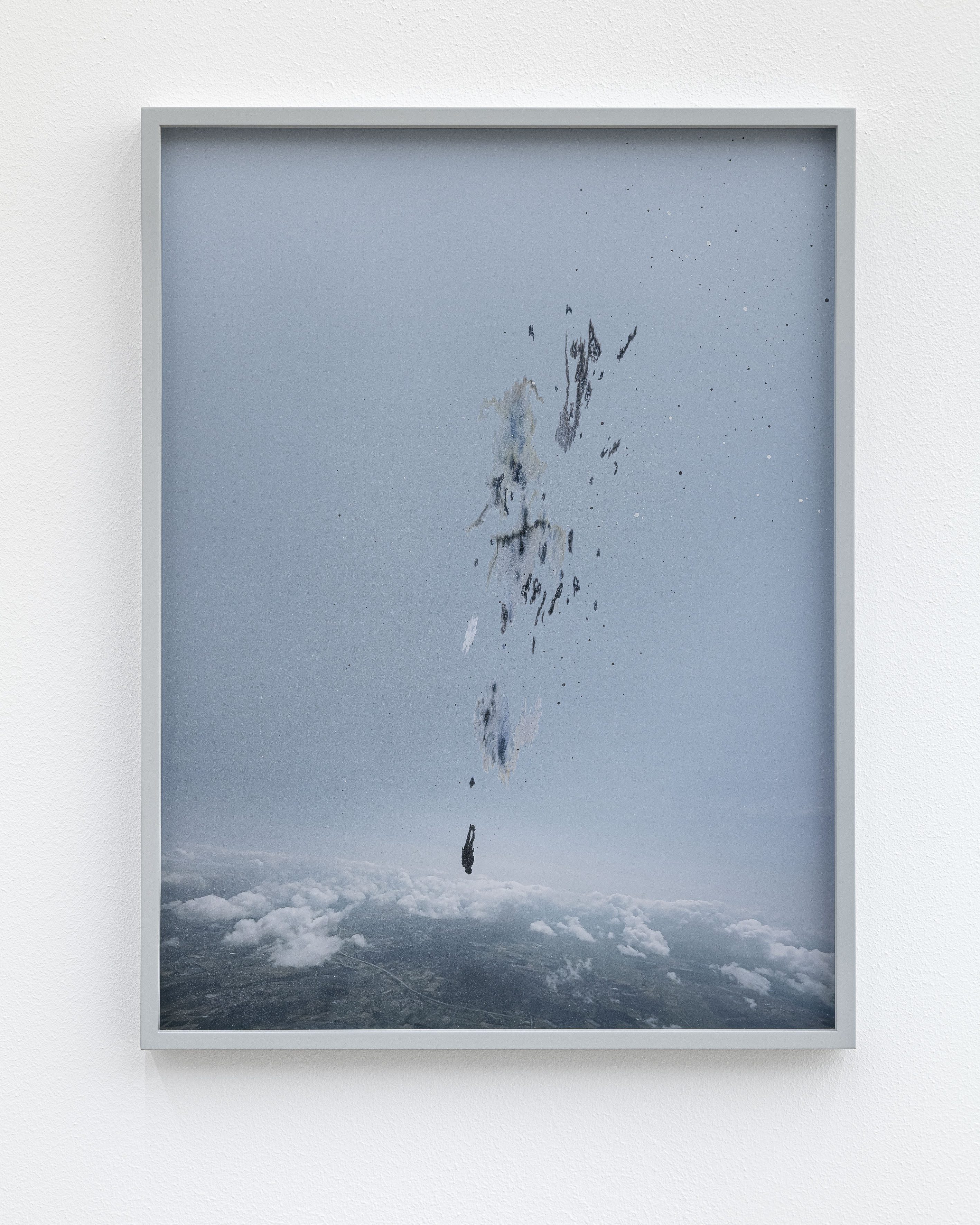
Anna Vogel, Skydiver III, 2025, pigment print, ink, varnish, frame finished in light gray, 53 × 40 cm (3 variations)
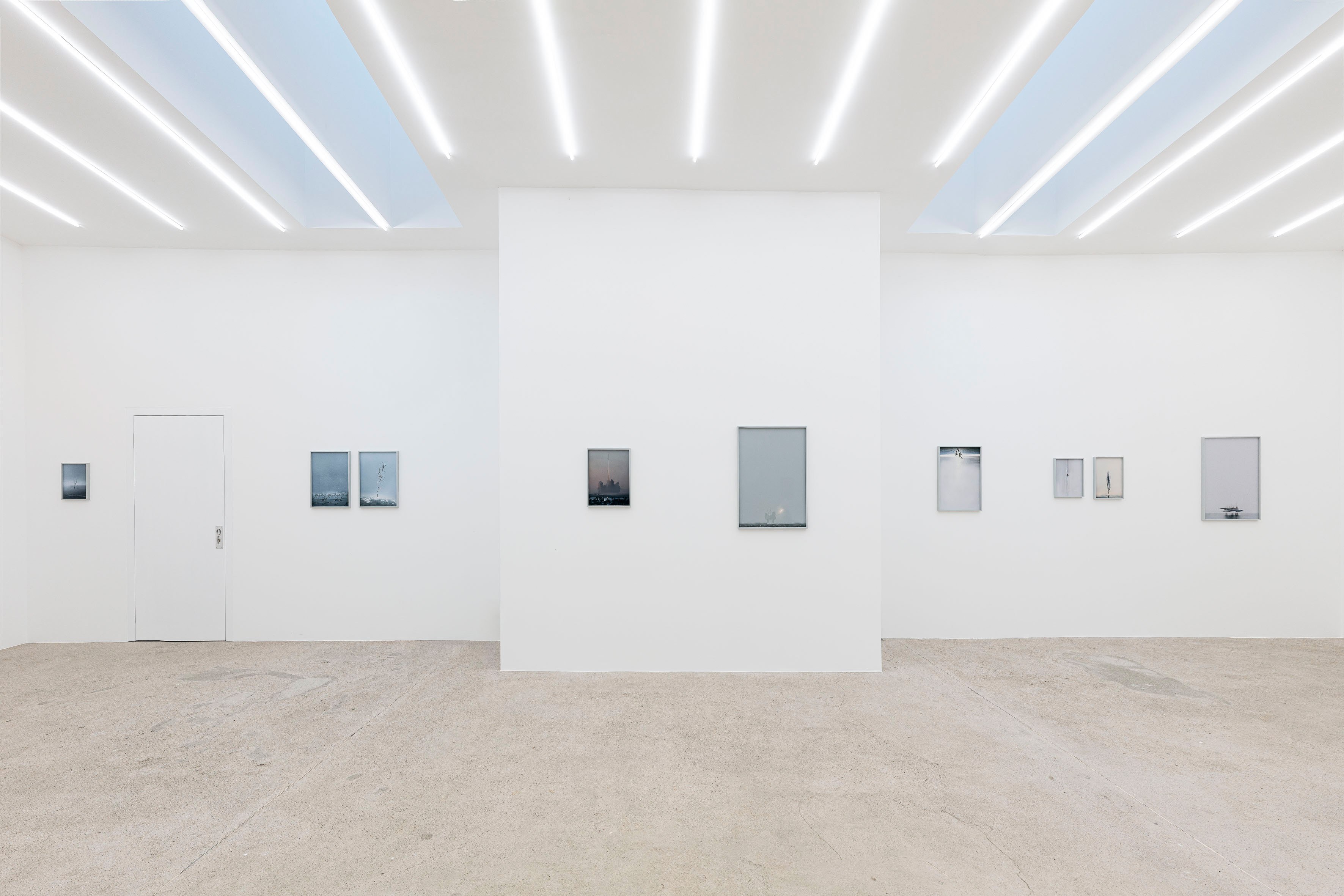
Anna Vogel, Fly In Fly Out, 2025, exhibition view at Sperling, Munich
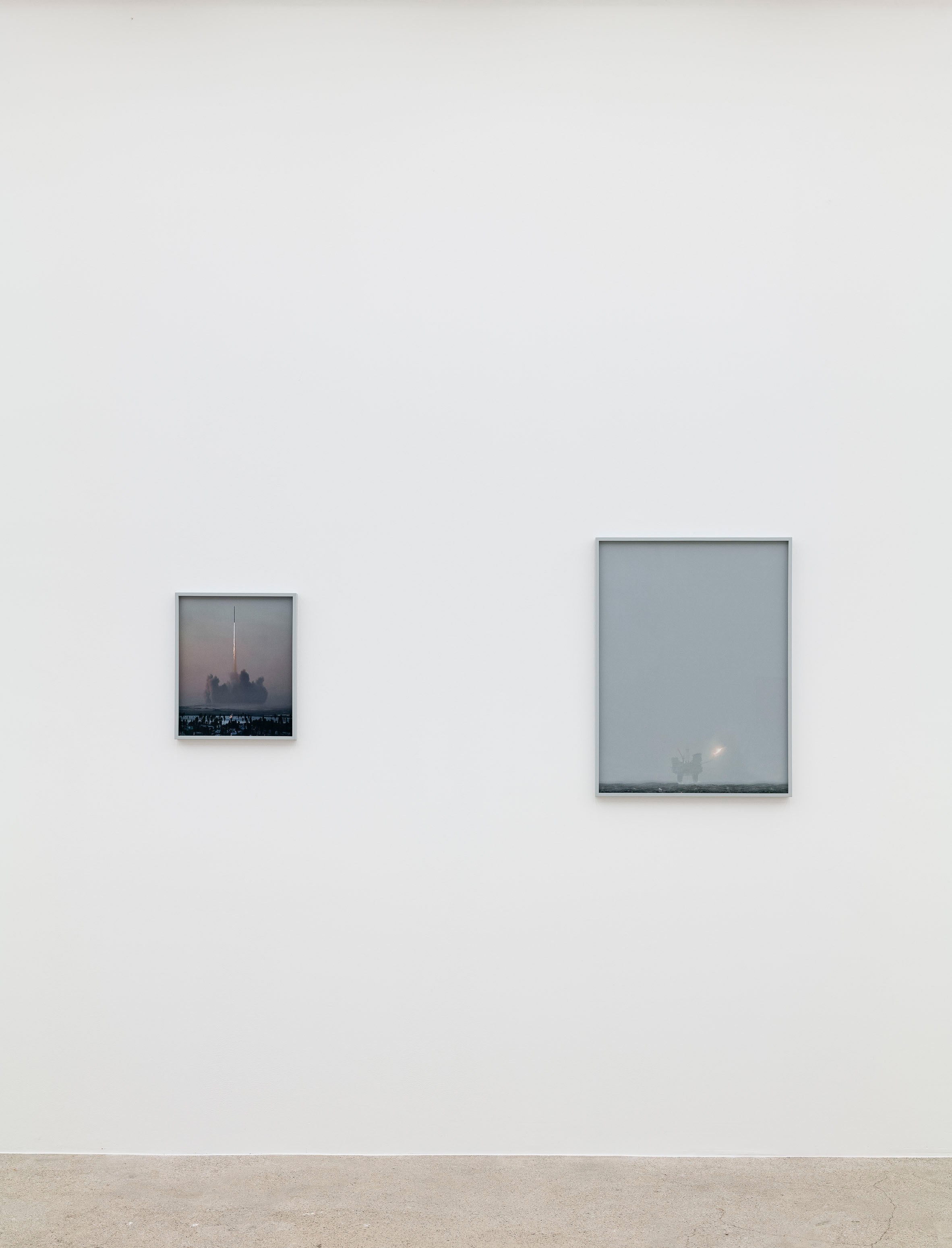
Anna Vogel, Fly In Fly Out, 2025, exhibition view at Sperling, Munich
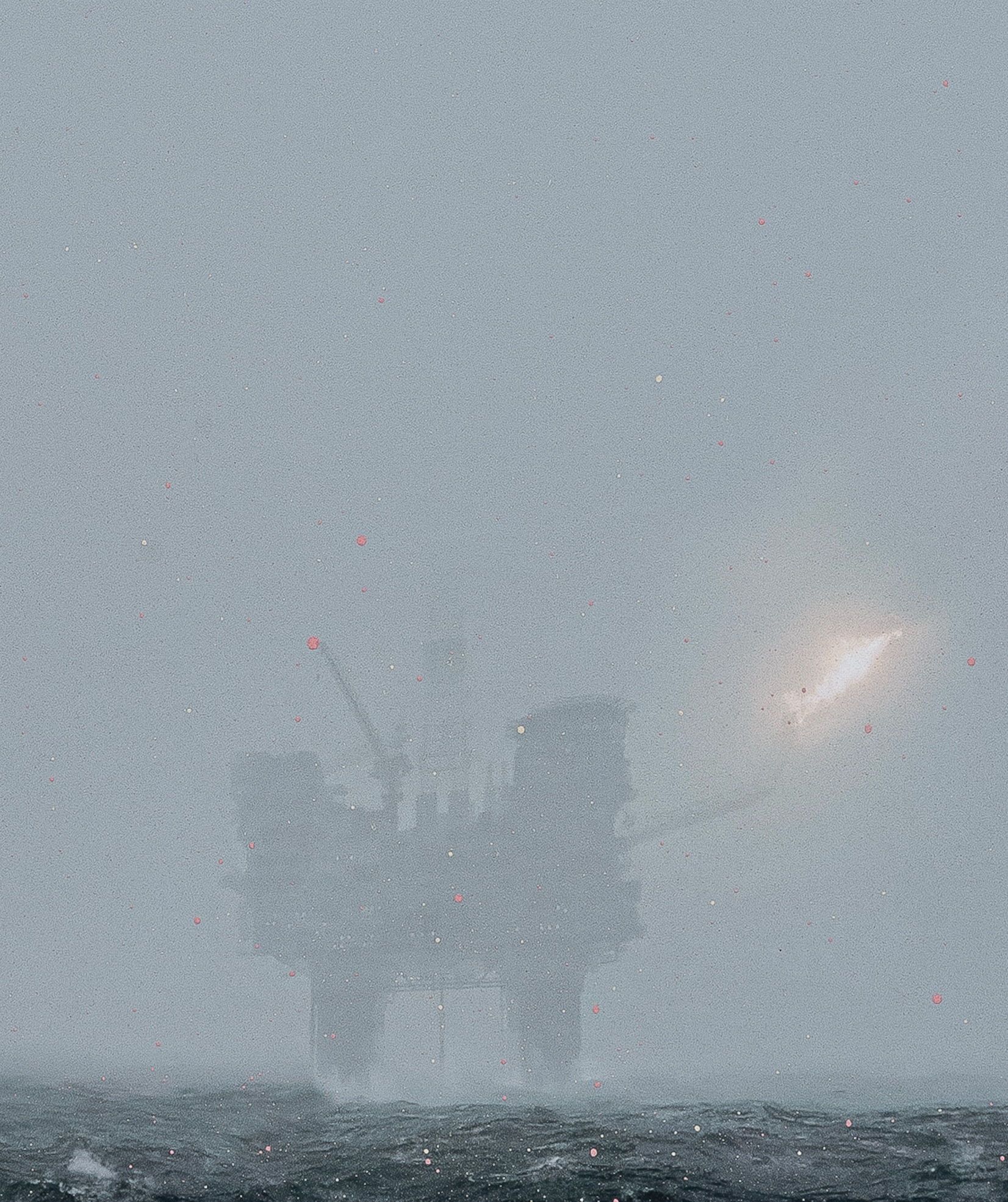
Anna Vogel, oilrig, 2025, pigment print, varnish, frame finished in light gray, 80 × 60 cm (3 variations)

Anna Vogel, Fly In Fly Out, 2025, exhibition view at Sperling, Munich
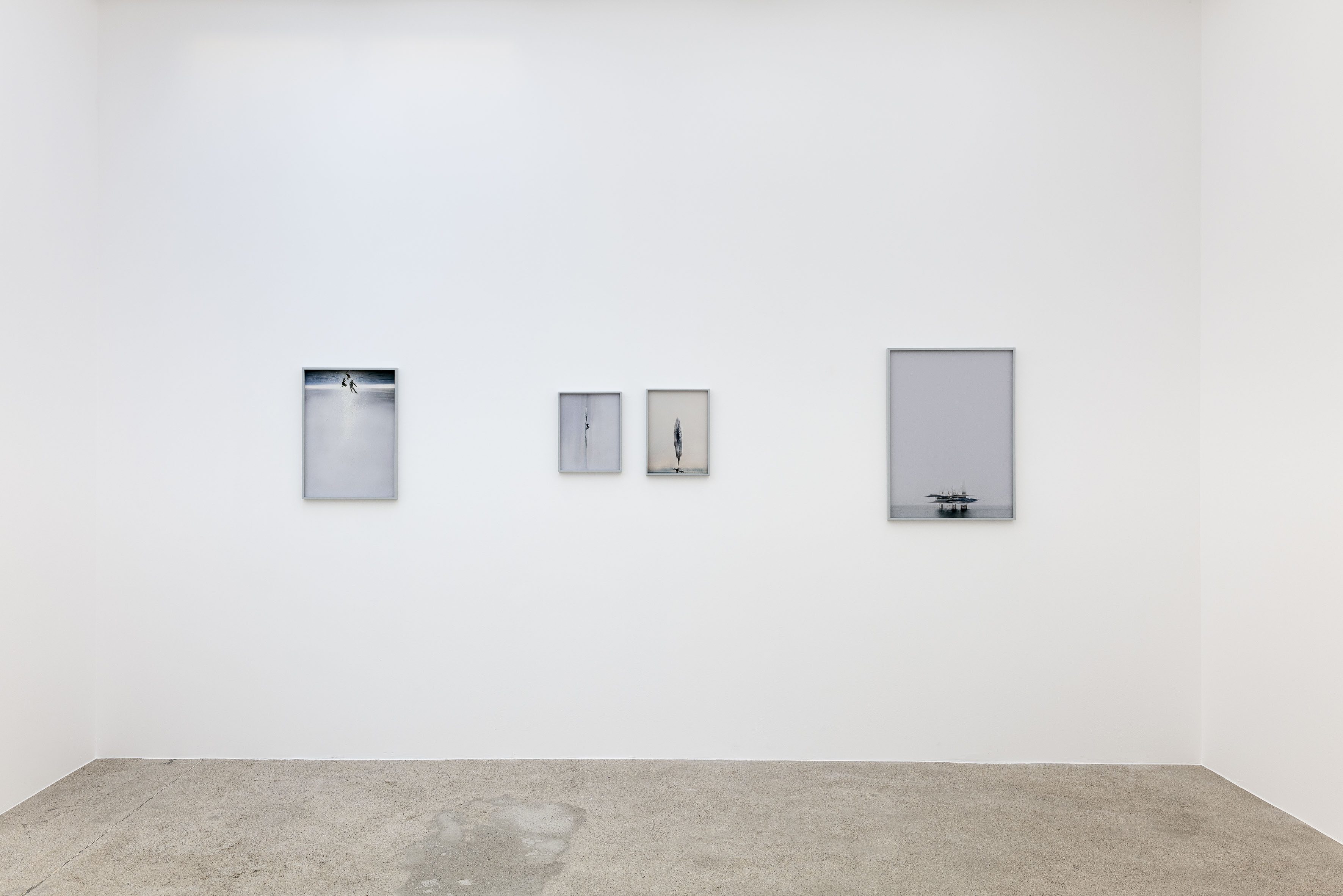
Anna Vogel, Fly In Fly Out, 2025, exhibition view at Sperling, Munich
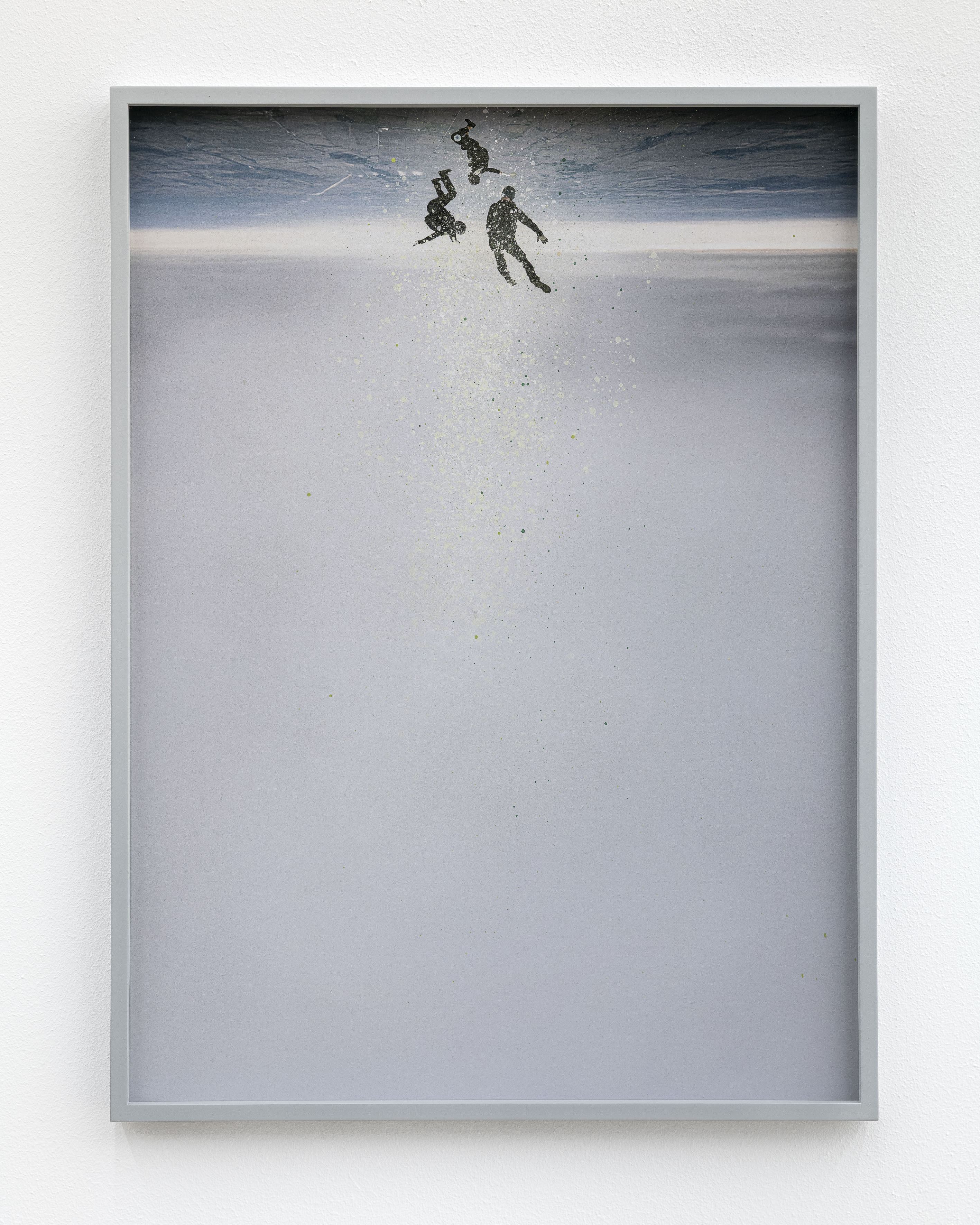
Anna Vogel, Skydiver VI, 2025, pigment print, varnish, frame finished in light gray, 61 × 45 cm (3 variations)
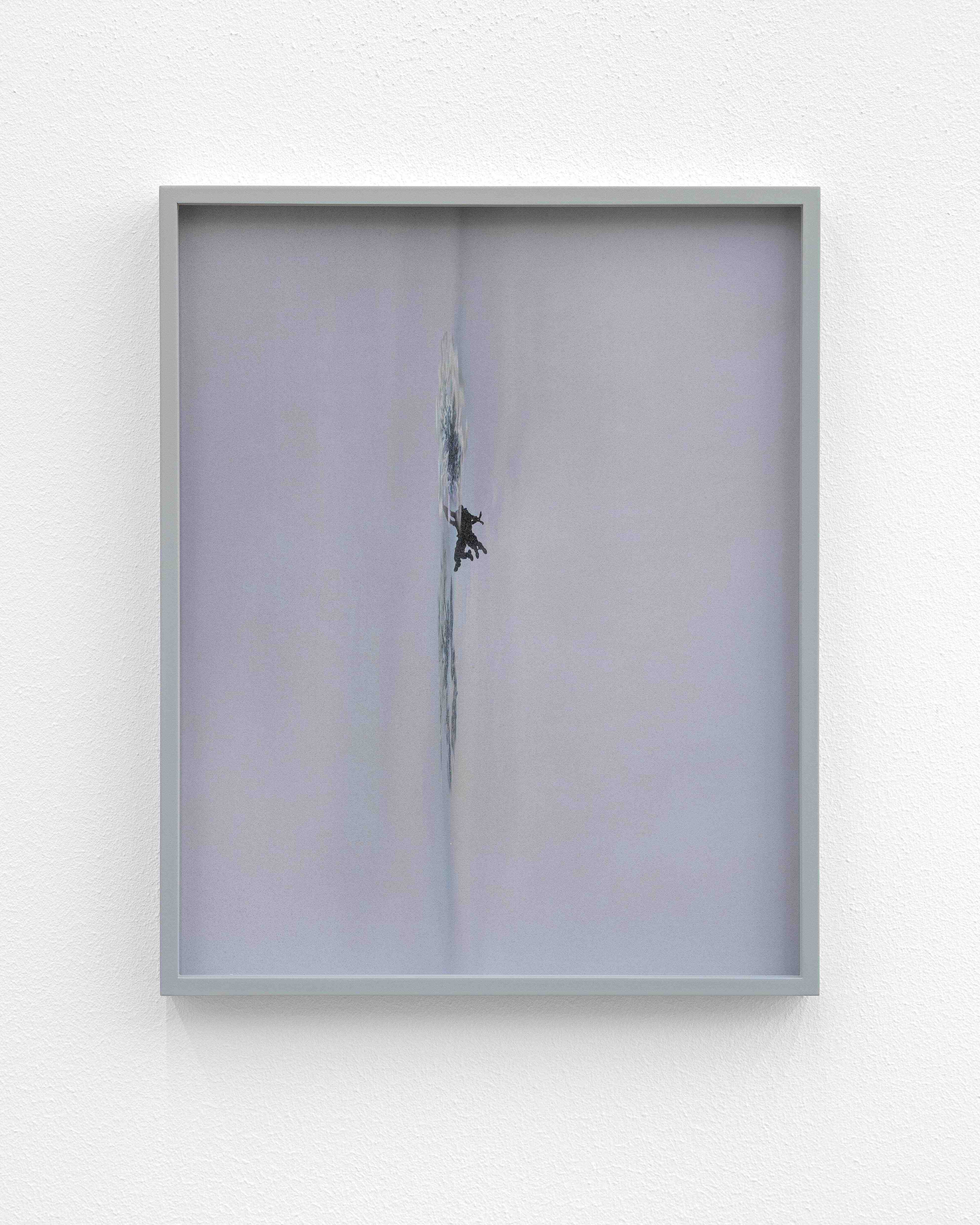
Anna Vogel, Skydiver VII, 2025, pigment print, ink, varnish, frame finished in light gray, 37 × 30 cm (3 variations)
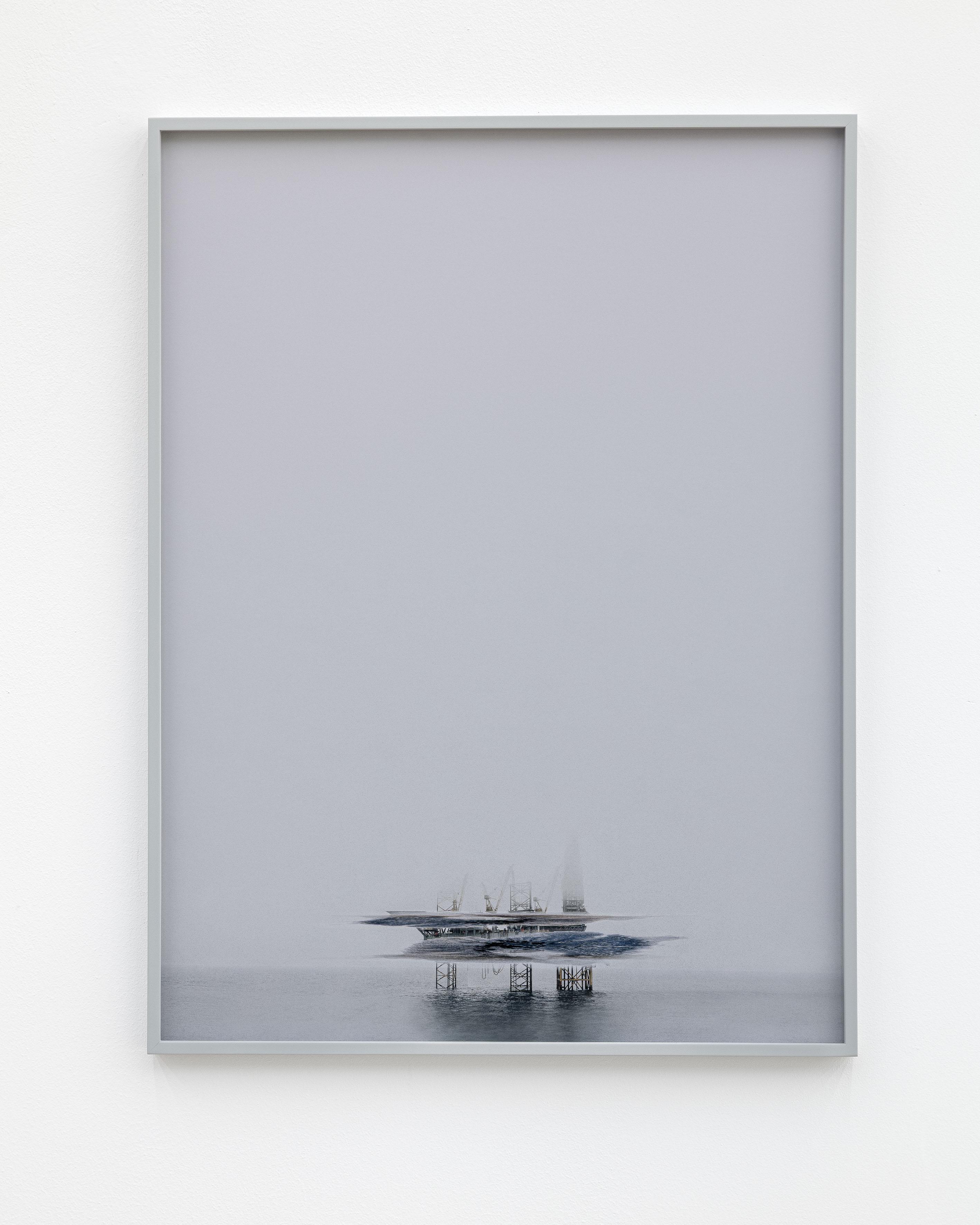
Anna Vogel, we drift like worried fire, 2025, pigment print, ink, varnish, frame finished in light gray, 80 × 60 cm, (3 variations)
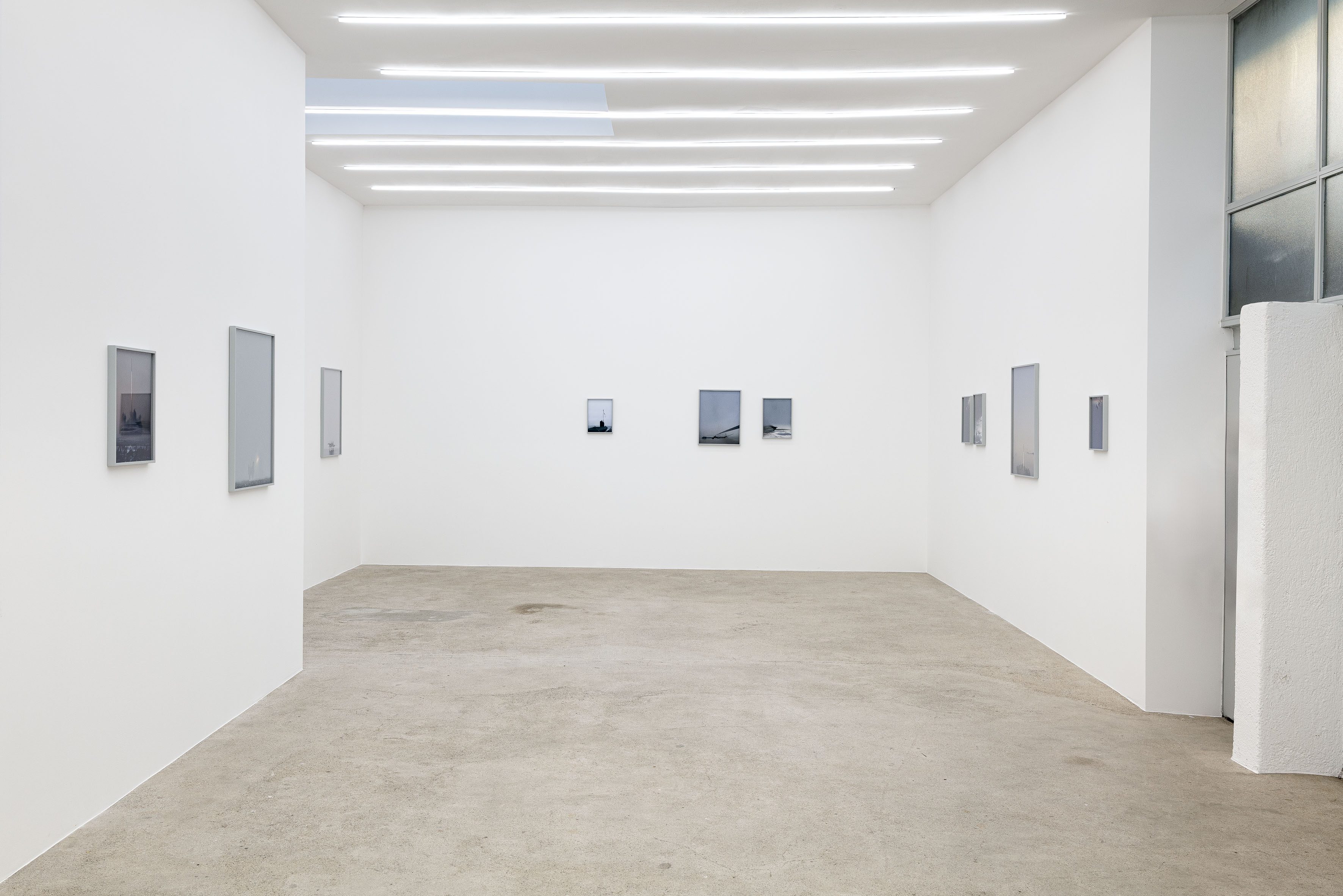
Anna Vogel, Fly In Fly Out, 2025, exhibition view at Sperling, Munich
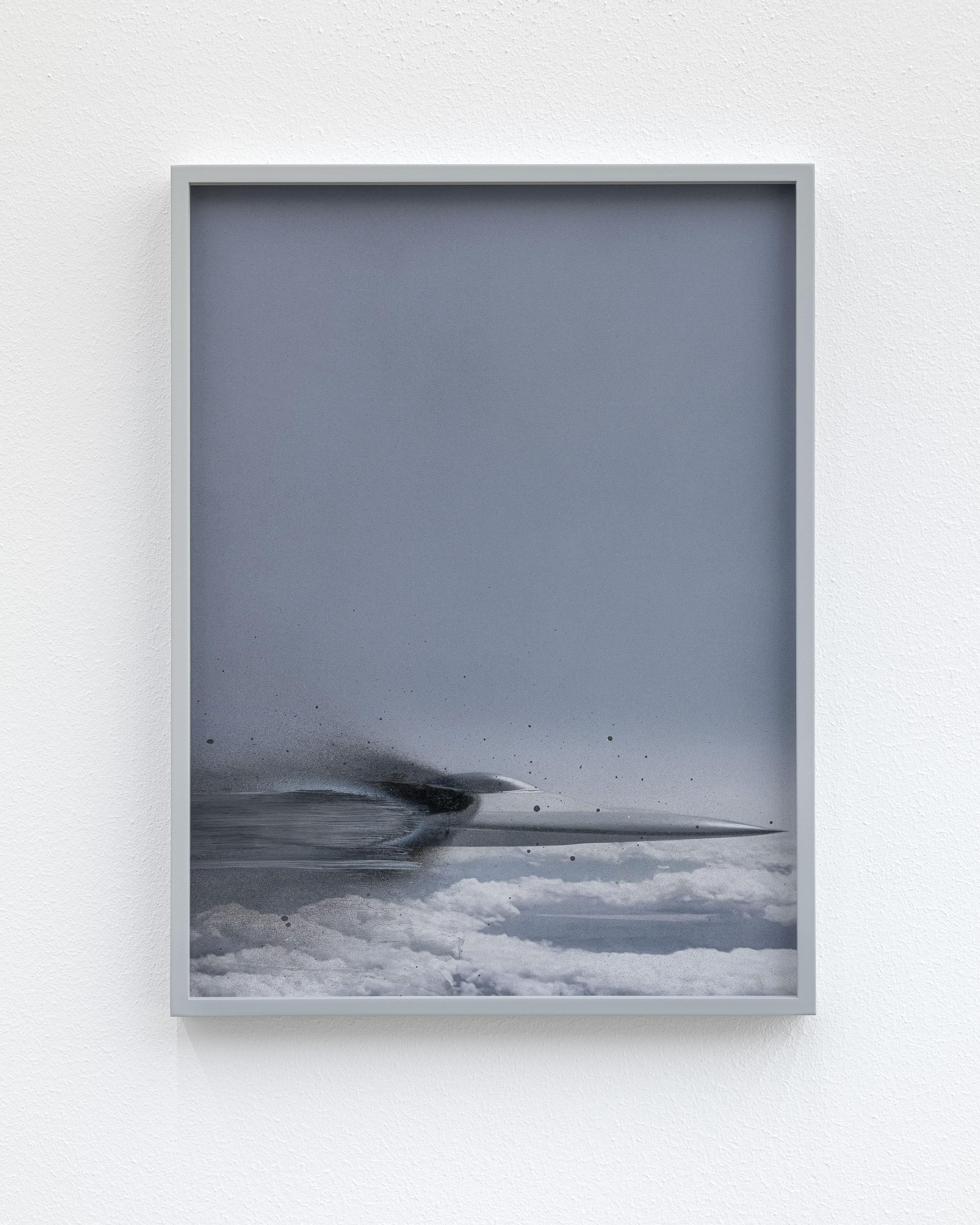
Anna Vogel, B2 Bomber, 2025, pigment print, ink, varnish, frame finished in light gray, 40 × 30 cm (3 variations)

Anna Vogel, Fly In Fly Out, 2025, exhibition view at Sperling, Munich
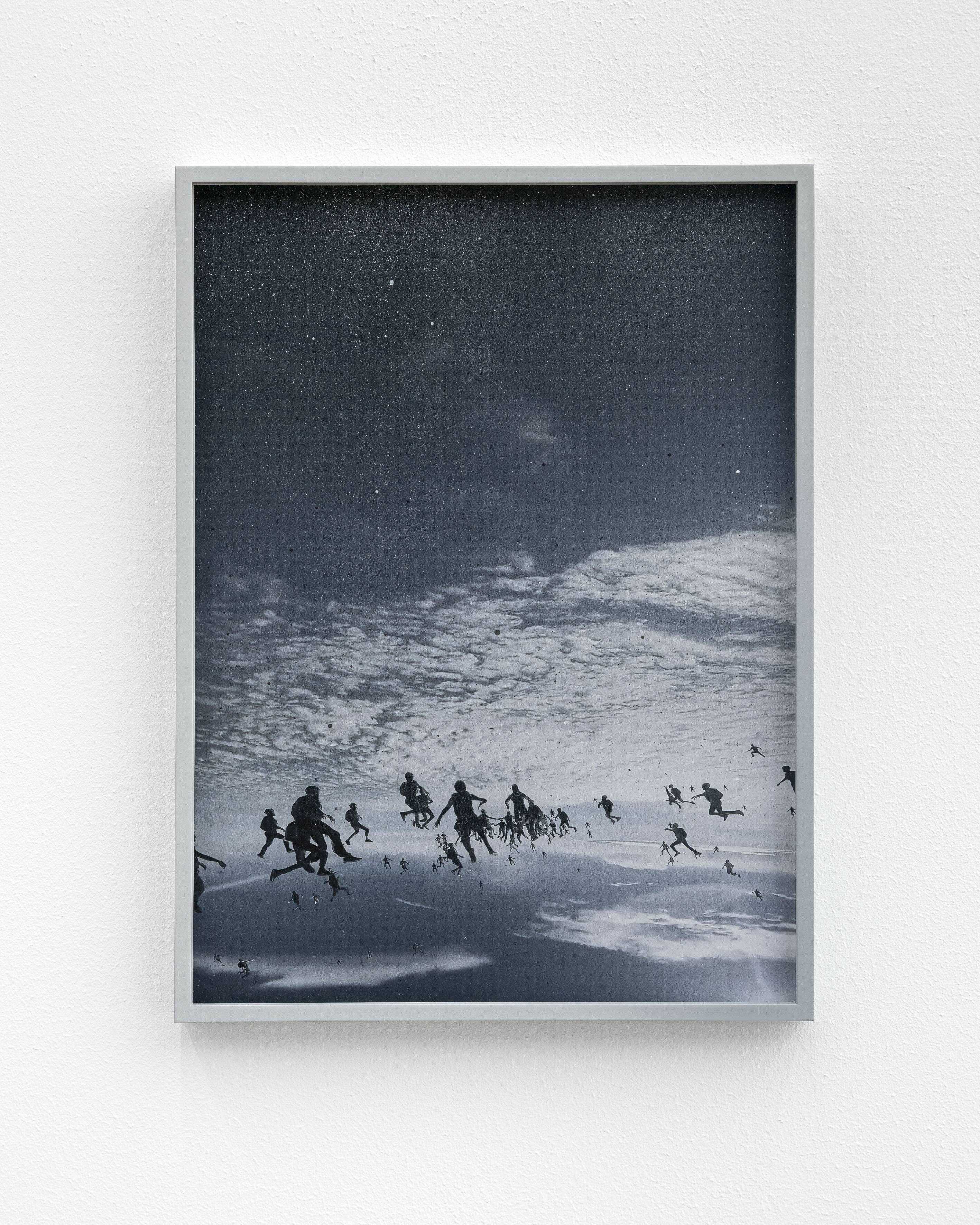
Anna Vogel, globe II, 2025, pigment print, varnish, frame finished in light gray, 42 × 31 cm (3 variations)
A story must offer interwoven sensing: fractures, flashbacks, flickers – something to relate to, personally. Fiction is
never fully detached from the real; it conceptualizes life into a connected mode of observing – more abstract, freer,
more imaginative. Breaking out. Falling and flying. Drifting in and out of the here and now.
Like the best fictions, Anna Vogel’s work channels the spirit of real-life traces and found images – fragments of
extraction, exhaustion, and breaking free. Her practice invites eyes exhausted by witnessing, scrolling,
remembering, processing, and forgetting to ultimately break free from reality, entering instead a fictitious realm
where the natural sublime collides with technological fracture.
Vogel’s images inhabit a space of suspension – between the celestial, the terrestrial, and the marine; between
presence and disappearance; between manual manipulations and digital ruptures. In her Fly In Fly Out show, she
intervenes on images extracted from the web’s collective memory, drawn from online archives and refracted
through manifold stories of offshore oil extraction and labor.
Through recurring subjects – skydivers, clouds, oil rigs, and catastrophes – Vogel opens a field where the sublime
and political unease coexist. Her skydivers appear weightless, tiny specks suspended against immeasurable
expanses of sky over water. They embody a moment of pure becoming: balanced between gravity and
transcendence, risk and release. The images evoke the tradition of the photographic sublime, where human scale
dissolves within the immensity of (un-)natural forces. Yet Vogel’s work resists romanticism. Her glitches reveal
the fragility of vision in an age defined by extraction, datafication, and environmental precarity.
These images seduce, inviting us into boundless skies and atmospheric vastness, into technological mastery and
dreamlike expanses – yet beneath their surface lies a meditation on photography’s historical complicity in
extraction and environmental crisis. As Ariella Azoulay argues in The Civil Contract of Photography, the camera has
historically served imperial vision, translating territories into knowable – and thus exploitable – surfaces. Vogel’s
divers, however, are not agents of control but figures of vulnerability. They seem precariously small, almost erased
by the vastness they traverse. Her work destabilizes the aerial gaze: she transforms the language of mastery into
one of fragility, suggesting that even from above, we are neither omnipotent nor detached from the environments
we inhabit – we, along with our human-made technological machines of control and extraction, are implicated.
Photography – and digital imagery more broadly – cannot be disentangled from extractivism and petroculture. The
production, storage, and circulation of images depend on fossil fuels at every stage, from the plastics in cameras to
the energy demands of server infrastructures. Vogel’s work resonates deeply with this insight: her skies, clouds,
and glitches can be read as petrolandscapes, where the seeming immateriality of vision collides with its material
dependencies.
In hovering between immersion and rupture, Vogel’s work resists both nostalgia for an untouched sublime and
surrender to technological determinism. Instead, she offers a third possibility: to inhabit suspension knowingly, to
acknowledge the fractures in our seeing while refusing to look away. Her images invite us into a liminal position –
to hover alongside the divers, to drift among the clouds – while remaining conscious of the infrastructures and
histories embedded within these archives. They hold us in that vertiginous space where wonder and warning
converge, where every pixel reflects its entanglement in material extraction, and every person mirrors their
exhaustion and, ultimately, their hoped-for release.
The truer the facts, the better the fiction — or so we are told.*
*Virginia Wolf writes: “Fiction must stick to facts, and the truer the facts the better the fiction – so we are told.” (A Room of One’s Own, 1929, 14)
Ilaria Sponda
